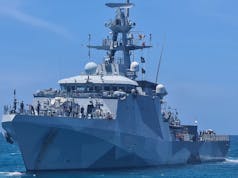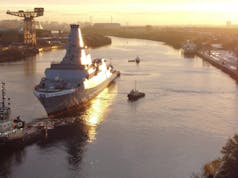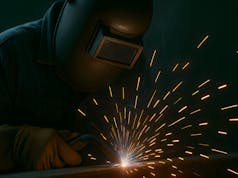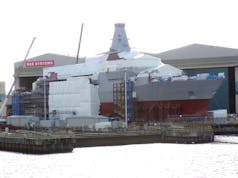HMS Queen Elizabeth’s diesel generators have been powered-up, bringing the supercarrier to life for the first time.

Minister of State for Defence Procurement, Philip Dunne, has officially started the first of the ship’s four diesel generators in Rosyth today bringing the ship to life.
“It is a real pleasure to be back in Scotland, home of the UK’s shipbuilding industry, to witness the impressive progress that is being made on our new aircraft carriers.
Powering up the diesel generator today marks an important milestone on the journey to bring these highly versatile ships into service with our Armed Forces. They will be the largest, most capable and effective surface warships ever constructed in the UK. The build programme is supporting thousands of jobs across the country, with over 4,000 of those jobs at Rosyth and the Clyde.”
The minister also announced that BAE has been awarded a £5.5M contract to install a new Vessel Traffic Management System to assist in the controlling and monitoring of ship movements within Portsmouth Harbour to prepare for the arrival of the vessel around the end of 2016, not 2015 as previously claimed by Penny Morduant MP.

The 70,600 tonne supercarrier has undergone significant preparation by the Aircraft Carrier Alliance to get it ready to start the first of her diesel engines.
The vessels feature a CODLAG (combined Diesel-Electric and Gas Turbine propulsion) arrangement and host two MT-30 Rolls Royce turbines, four Wartsila diesel generators and one Wartsila 2MW emergency diesel generator set. Each of the MT-30’s generate 36 MW (the Falkland Islands only consume 16MW!). Both gas marine turbines will provide the power for propulsion, weapons, sensors, command systems and the lower voltage requirements of the ship. The four Wartsila 38 marine diesel engines will generate 11.6 MW each. The vessels will have a total installed power approaching 110MW, enough to power a medium sized town.
Following sea trials in 2017 and flying trials for helicopters and the F-35B in 2018, HMS Queen Elizabeth will undertake a build up towards achieving an Initial Carrier Strike Capability in 2020.













Admiral Nelson is smiling in Heaven. 🙂
I hope the black paintwork on the barriers protecting the equipment is done properly before the ship is handed over, looks decidedly shabby.!
Why aren’t they nuclear powered?
politics
The official reason is because it costs a lot more. Another factor to consider though is that some countries and cities are “nuclear free” and will not allow nuclear powered vessels to dock, for example New Zealand. This limits operational flexibility.
Since when were the vessels referred to a super carrier? lol
Also, hope the RN can find the crew to man them :/ not to mention the support vessels re fuel and stores.
Why does the new carrier have to have such a brutishly blunt bow?.. it looks as its been sawn off to save money but wouldn’t it have saved an awful lot of fuel over the years if could have been more elegantly streamlined?